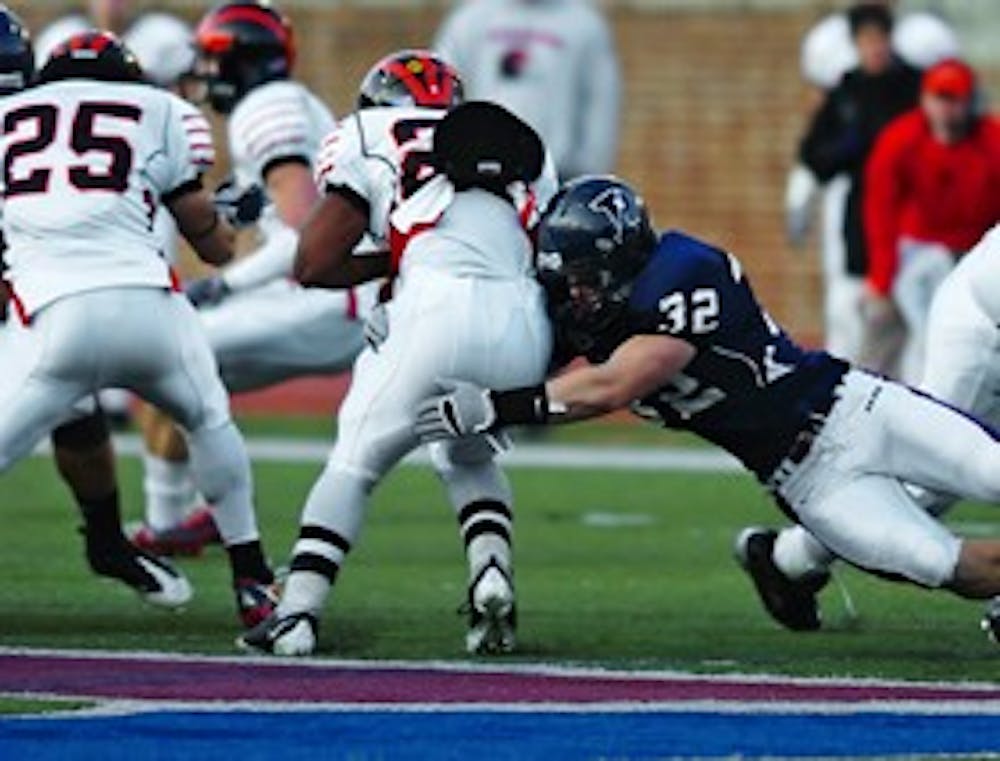
More often than not, it’s pretty easy to determine the top performer in a football game. Little more than a quick perusal of the box score qualifies announcers to choose a game’s stars, after all.
But even amidst an avalanche of rushing yards, complete passes and touchdowns from Penn’s offense, statistics could not reflect the most important factor in the Quakers’ 42-7 thrashing of Princeton.
And that’s because the most influential aspect of the Red and Blue’s attack, defensive or offensive, doesn’t have that many recordable stats.
A defensive lineman can rack up sacks, forced fumbles, tackles and even quarterback pressures — when the lineman almost sacks the quarterback but can’t get to him before he throws the ball — but there is no real way of recording how uncomfortable they make the quarterback.
And I’m not talking about mean faces that defensive linemen Brian Levine or Joe Goniprow — who combined for seven tackles, 1.5 for loss — can make, either.
The stronger and quicker the rush from defensive linemen, whether they get the sack or not, the less time a quarterback has to make a decision.
Less time to decide means poorer decisions, which lead to interceptions.
The ability of the Quakers’ defensive line to get a consistent rush on Princeton quarterback Tommy Wornham disrupted Princeton’s passing game, in turn taking pressure off of the secondary and allowing them to play more freely.
The results: holding Wornham to a paltry 18-for-34, one touchdown and two picks.
“It makes our job so much easier, knowing you only have to cover them for so long,” senior defensive back Chris Wynn said. “[The defensive line’s pressure] builds confidence in our defense.”
That pressure also closes up holes that opposing running backs could run through; Princeton recorded 25 net rushing yards.
Indeed, pressure was the theme on both sides of the ball for the Quakers, who faced a Tigers defense just as inept as their offense.
In this case, it was pressure that Penn quarterback Kyle Olson avoided that made all the difference.
Olson took to rolling out of the pocket as Princeton defenders tried to tip balls at the line of scrimmage, and the result was his best game wearing the Red and Blue: 20-for-32, 238 yards and three touchdowns despite sitting out the fourth quarter.
“It seemed like a lot of their D-linemen were going for batted balls, as opposed to rushing me,” Olson said. “We had to get me out of the pocket a little bit. Usually the kind of quarterback I am is more of a pocket passer.”
So coach Al Bagnoli and Olson adapted well, changing their game plan on the fly.
Princeton was pressuring vertically — a lot like basketball defense — so they moved Olson side-to-side.
Just like the Quakers D-line’s ability to get pressure on the quarterback made things easier on the secondary, Olson’s ability to avoid pressure made things that much harder on the Princeton defensive backs.
And just like the D-line’s rush, Olson’s maneuverability doesn’t show up in the box score.
So these semi-tangible forces, especially those of players like Goniprow and Levine, often go unnoticed.
Heres to you, big fellas …
Eli Cohen is a sophomore philosophy major from Washington, D.C. He can be contacted at dpsports@dailypennsylvanian.com.
The Daily Pennsylvanian is an independent, student-run newspaper. Please consider making a donation to support the coverage that shapes the University. Your generosity ensures a future of strong journalism at Penn.
DonatePlease note All comments are eligible for publication in The Daily Pennsylvanian.




